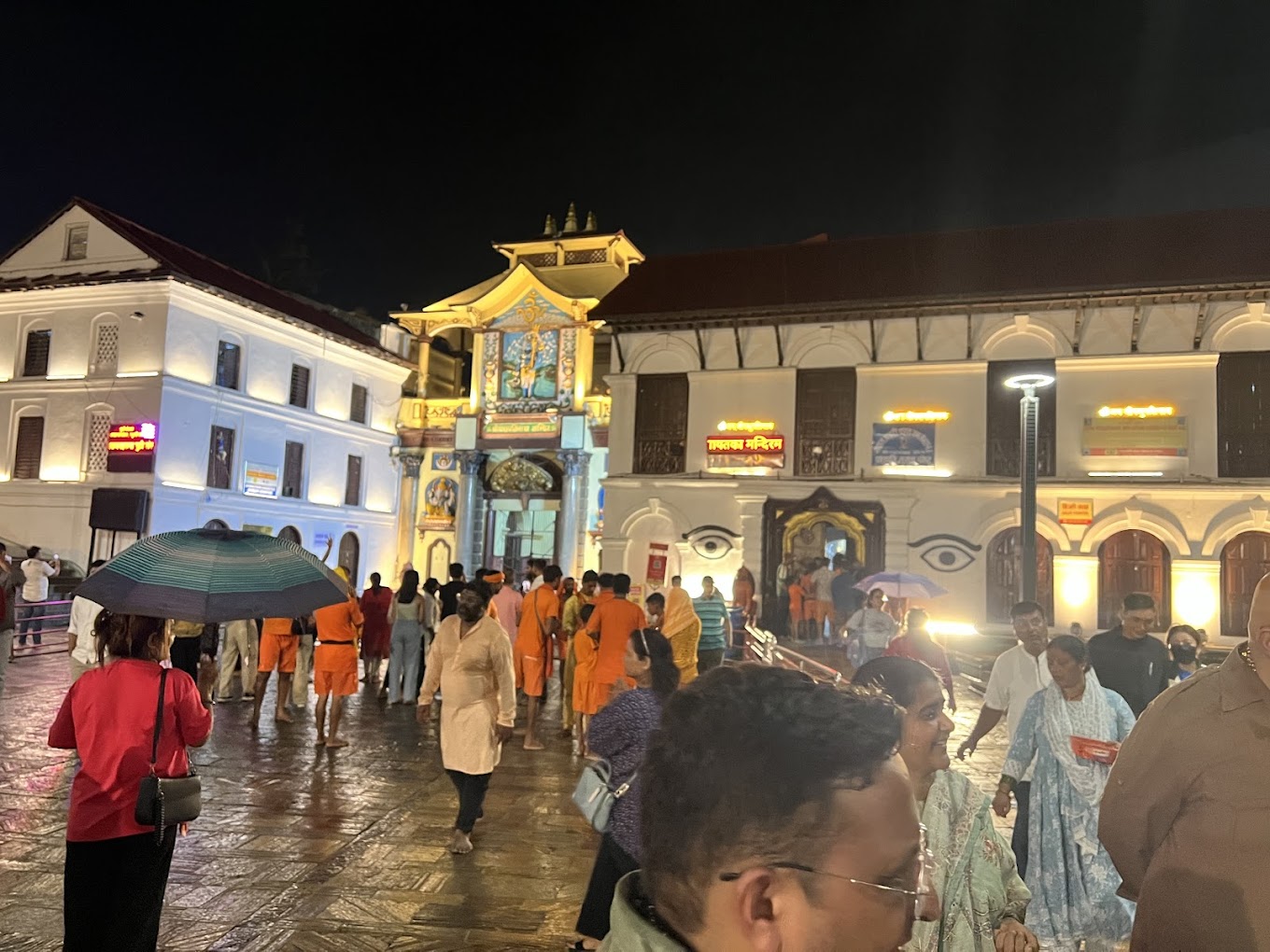
Perched on the banks of the sacred Bagmati River in Kathmandu, the Pashupatinath Temple is one of the most significant and revered Hindu shrines in the world. Dedicated to Lord Shiva, the temple holds immense religious and cultural value, drawing in pilgrims, tourists, and spiritual seekers alike. As a UNESCO World Heritage site, it represents both the tangible and intangible essence of Nepal’s deep-rooted religious traditions.
In this comprehensive guide, we will take you through the history of this ancient temple, the daily rituals, timings, entry procedures, and important information for those wishing to visit this sacred space.
| Pashupatinath Temple Nepal Facts | |
|---|---|
| Site | Pashupatinath |
| City, District | Gaushala, Kathmandu |
| Province | Bagmati |
| Established by | Prachanda Deva |
| UNESCO World Heritage Site listed | 1979 AD |
| Major Attractions | Pashupatinath Temple Guhyeshwari Temple Gorakhnath Temple The Cremation Ghats The Viewpoint The Religious Market |
| Major Celebrations | Shivaratri Teej Festival Sandhya Aarti (every evening) |
| Architecture | Pagoda Style (major) Shikhara Style Dome Style |
| Opening Hours (Main Temple) | 04 AM – 12 PM 05 PM – 09 PM |
| Entry Fees | Free for Nepalese and Indians NRs. 1000 for others |
History of Pashupatinath Temple: Legends and Origins
The Pashupatinath Temple, which stands as a beacon of Nepalese Hinduism, has a rich and mysterious past. Its origins are traced back more than a millennium, though the exact dates of its establishment remain unclear. Many historians place its origins as early as 400 AD, while others argue that the site was a sacred place of worship long before any temple was constructed. Regardless of its timeline, the temple has played a critical role in shaping the religious and cultural landscape of Nepal.
Several legends surround the temple’s origins, the most popular being the tale of the cow herder. It is said that long ago, a local herder noticed that his cow mysteriously poured milk over a particular spot on the ground. Intrigued by this occurrence, he dug at the location and discovered an ancient Shivalinga buried beneath the soil. Upon this revelation, it was declared a holy site dedicated to Lord Shiva, leading to the construction of a temple.
Another legend connects Pashupatinath to the story of Shiva’s escape. Lord Shiva, seeking solitude, transformed himself into a deer and wandered into the forests of Kathmandu Valley. The gods, upon realizing Shiva’s disappearance, searched for him and eventually found him near the Bagmati River. They grabbed the deer by the horns, forcing him to revert to his divine form. In the process, one of his horns broke, and this broken horn became the symbol of Pashupatinath.
In addition to the legends, historical records show that the original structure of the temple has been destroyed and rebuilt multiple times due to natural disasters and invasions. The current temple structure was constructed in the 17th century by King Bhupendra Malla, maintaining its status as a central figure in Nepalese Hinduism.
Pashupati, meaning “Lord of the Animals,” is a manifestation of Lord Shiva, symbolizing his dominion over all living creatures. The deity is highly revered not just in Nepal, but by Hindus around the world.
Pashupatinath Temple Images
Architecture of Pashupatinath Temple
Pashupatinath’s architectural grandeur is another key aspect of its attraction. The temple is designed in the classic Nepalese pagoda style, featuring a two-tiered golden roof and richly carved silver doors. The temple’s walls and pillars showcase intricate wood carvings, each narrating stories from Hindu mythology and reflecting the skilled craftsmanship of Newari artisans.
At the center of the temple stands the main shrine that houses the Shivalinga, which is adorned with precious metals and sacred offerings. Only Hindus are allowed into this central area, preserving the sanctity of the inner sanctum. Surrounding the main temple are numerous smaller shrines and statues dedicated to other Hindu deities.
The sprawling Pashupatinath complex is not limited to the main temple alone. The site includes a series of smaller temples, ghats (steps leading down to the river), ashrams, and hospice centers. The Arya Ghat, located by the Bagmati River, serves as a key location for Hindu cremation ceremonies. Here, the sacred connection between life and death plays out daily as devotees perform last rites for their loved ones, believing that cremation at Pashupatinath guarantees liberation or moksha from the cycle of rebirth.
Nehal Pashupatinath Temple Daily Rituals
Pashupatinath Temple is the living pilgrimage centre of Nepal and has a diverse array of deep experiences to give. The following are the everyday ceremonies that take place around the temple:
- 04:00 am: West gate opens for visitors.
- 09:30 am: Pujaris arrive, open the 4 doors of the main temple and the bath and cleaning process of lord’s idol begins.
- 09:30 am: Conducting special puja till 11:30 am.
- 12:00 pm: Offering Baal Bhog to the lord till 12:30 pm.
- 01:30 pm: Lord Shiva is presented with Mulbhog.
- 02:15 pm: Prayer time ends and all 4 doors of the main temple close.
- 06:45 pm: Temple door reopens and the evening Aarati and Jal Avishekh at the main Pashupati Temple begins.
- 07:00 pm onward: Daily Bagmati Ganga Aarti begins. Many people, including youngsters, attend this event.
- 08:00 pm: All doors are closed.
Timings of Pashupatinath Temple: Planning Your Visit
Pashupatinath Temple is open to visitors every day of the year. However, the exact timings for different rituals and events are fixed, offering devotees a chance to engage in the spiritual practices at specific intervals. Below is a breakdown of the daily schedule:
- Temple Opening Time: 4:00 AM
- Temple Closing Time: 9:00 PM
- Morning Abhishekam (Ritual): 5:00 AM to 6:00 AM
- Evening Bagmati Aarati (Ritual): 6:00 PM to 7:30 PM
The temple opens its doors at 4:00 AM, allowing devotees to partake in early morning prayers and offerings. The Abhishekam, which is the ritual bathing of the Shivalinga, takes place between 5:00 and 6:00 AM. Afterward, devotees are permitted to perform darshan (viewing of the deity) and offer their prayers.
One of the temple’s most visually and spiritually enchanting events is the Evening Aarati (also called Bagmati Aarati) that begins at 6:00 PM and lasts until 7:30 PM. During this time, priests perform elaborate rituals with lamps, fire, and devotional music on the banks of the Bagmati River. It’s a mesmerizing spectacle that attracts not just pilgrims, but tourists as well, offering a profound connection to the temple’s spiritual energy.
Entry Fees and Regulations
Pashupatinath Temple welcomes millions of visitors each year, ranging from devout pilgrims to curious tourists. However, certain regulations govern entry based on religious beliefs.
- For Hindus (including Indian nationals), entry to the temple is free.
- Non-Hindus and international tourists must pay an entry fee of 1,000 NPR (approx. USD 10) to access the temple complex. However, they are not permitted to enter the inner sanctum or perform rituals.
It is important to adhere to the dress code while visiting Pashupatinath. Visitors are expected to wear modest clothing that covers the shoulders and legs. Footwear must be removed before entering the temple precincts, and there are designated stands to store shoes.
Photography is strictly prohibited inside the temple grounds, especially within the main sanctum, in order to maintain its spiritual sanctity. However, tourists are allowed to take pictures of the temple’s exterior and surrounding areas.
Daily Rituals at Pashupatinath Temple
The daily rituals at Pashupatinath Temple are a core part of its spiritual life. These rituals are not just ceremonial acts; they are symbolic expressions of the deep reverence for Lord Shiva and the profound spiritual energy that the temple embodies.
Here’s an overview of the daily rituals:
1. Morning Abhishekam (4:00 AM – 6:00 AM)
The day at Pashupatinath begins early with the morning abhishekam, where the priests bathe the Shivalinga with various sacred substances such as water, milk, honey, curd, and ghee. This is a highly symbolic act, representing purification and the devotion of the devotees to Lord Shiva. The atmosphere during this time is serene, and the temple is bathed in the soft glow of the early morning sun, creating a deeply peaceful environment for prayer and reflection.
2. Darshan (5:00 AM Onwards)
Once the morning abhishekam is complete, the temple opens for darshan. Devotees line up to offer flowers, fruits, incense, and other sacred items to the deity. The inner sanctum is filled with the sound of bells, conch shells, and mantras, creating a spiritual ambiance. During this time, devotees can seek blessings and connect with the divine presence of Lord Shiva.
3. Afternoon Pooja (1:00 PM – 2:30 PM)
In the afternoon, the temple becomes slightly less crowded, making it a good time for devotees to engage in more personal prayer. Special poojas are conducted by the priests during this time, offering various rituals to the deity. Devotees can participate in these rituals by purchasing special pooja tickets or simply observing the proceedings from a distance.
4. Evening Bagmati Aarati (6:00 PM – 7:30 PM)
The Bagmati Aarati is one of the most captivating rituals of the day. Conducted on the banks of the Bagmati River, this evening ritual involves a group of priests who perform synchronized movements with large oil lamps, accompanied by chanting and the sound of conch shells. The ritual is symbolic of offering light to Lord Shiva and the river, and it is attended by hundreds of devotees every evening. The Bagmati Aarati not only holds spiritual significance but also creates a mesmerizing visual display as the flames dance in the night air.
5. Night Pooja (8:30 PM – 9:00 PM)
The final ritual of the day is the night pooja, which is performed just before the temple closes its doors for the night. This is a quieter and more intimate time for devotees to offer their prayers before the deity is symbolically put to rest for the night. The temple is then closed to the public, only to be reopened in the early hours of the next morning.
Festivals and Celebrations at Pashupatinath Temple
Throughout the year, Pashupatinath hosts a number of significant Hindu festivals, each drawing enormous crowds of devotees from across Nepal and India. Among these, Maha Shivaratri, celebrated in honor of Lord Shiva, is the most prominent festival at Pashupatinath. On this day, thousands of devotees, including Sadhus (Hindu ascetics), gather at the temple to offer prayers, chant mantras, and engage in rituals that last throughout the night.
Other important festivals include Teej, a celebration of womanhood and marital devotion, and Haritalika, where women fast and pray for the well-being of their husbands.
How to Reach Pashupatinath Temple
The Pashupatinath Temple is located about 5 kilometres from the heart of Kathmandu and about 4 kilometres from Tribhuvan International Airport. Various transportation options, including taxis, buses, and rickshaws, are available to reach the temple. If you’re staying in Thamel, a popular tourist hub in Kathmandu, it’s a quick 20-minute drive to the temple complex.
Pashupatinath Temple Pujas Cost
| Puja Name | Cost (NPR) | Cost (INR) |
|---|---|---|
| Panchamrit Puja | 2,100 | 1,313 |
| Panchamrit puja with Baal Bhog | 3,100 | 1,938 |
| Panchamrit puja with Baalbhog and Rudrabhisek | 7,500 | 4,688 |
| Panchamrit puja with Laghu Rudrabhisek and Purabhog | 15,100 | 9,438 |
| Panchamrit puja with Rudrabhisek, Purabhog, Sawalakh (1.25 lakhs) batti aarti | 35,000 | 21,875 |
| Panchamrit puja with Laghu Rudrabhisek, Purabhog, Hawan and Sawalakh (1.25 lakhs) batti aarti | 65,000 | 40,625 |
| Nitya Bhog and day-long puja | 1,71,000 | 1,06,875 |
| Ek Diwasiya Maharudri | 3,21,000 | 2,00,625 |
| Ekadash Diwasiya Maharudri | 8,00,001 | 5,00,001 |
| Ekadash Diwasiya Atirudri | 25,00,000 | 15,62,500 |
Best Time To Visit Pashupatinath Temple
The best time to visit Pashupatinath Temple largely depends on your preferences, whether you want to experience the temple during a major festival or in a quieter period. However, there are certain times of the year and day that can offer a more fulfilling and comfortable experience. Below are detailed suggestions:
1. Ideal Months for Visiting:
- October to March: The period from autumn to early spring is considered the best time to visit Pashupatinath Temple. The weather during these months is pleasant, with temperatures ranging between 10°C to 25°C (50°F to 77°F), making it easier to explore the temple and other attractions in Kathmandu. These months also avoid the monsoon rains, which occur between June to September, ensuring that your visit is not hindered by wet and muddy conditions.
- September and October are especially ideal as they come right after the monsoon, with clear skies and a fresh atmosphere. The surrounding Bagmati River and hills look particularly lush and beautiful during this time.
2. Festival Time:
- Maha Shivaratri (February/March): If you wish to experience the temple at its most vibrant, consider visiting during Maha Shivaratri, the grand festival dedicated to Lord Shiva. The festival usually falls in February or March and draws thousands of pilgrims, sadhus (holy men), and tourists from around the world. The temple is beautifully decorated, and devotees offer prayers and chant mantras all night long. However, keep in mind that it can be extremely crowded during this festival, and you’ll need to be prepared for long queues and significant crowds.
- Teej Festival (August/September): Another important festival at Pashupatinath is Teej, celebrated by Hindu women. During this festival, women fast and pray for the well-being of their husbands, and the temple sees a large influx of female devotees dressed in red saris. This celebration is filled with music, dance, and rituals, offering a colorful and festive atmosphere.
3. Time of Day:
- Early Morning (4:00 AM – 7:00 AM): For a more peaceful experience, visit the temple early in the morning when the doors open at 4:00 AM. You can witness the morning Abhishekam (the bathing of the Shivalinga) between 5:00 and 6:00 AM, which is a deeply spiritual and serene time. The temple is less crowded during these early hours, giving you an opportunity for uninterrupted prayers and a closer connection with the deity. The cool morning air and peaceful surroundings enhance the overall experience.
- Evening (6:00 PM – 7:30 PM): The Evening Bagmati Aarati is another magical time to visit the temple. This takes place from 6:00 PM to 7:30 PM on the banks of the Bagmati River and involves a mesmerizing fire ritual performed by priests, accompanied by chants, music, and the rhythmic movement of oil lamps. The atmosphere is spiritually charged, and the sight of the flames reflecting on the river creates a powerful experience.
4. Avoid Monsoon Season (June to September):
- The monsoon season in Nepal, which runs from June to September, brings heavy rainfall. The wet conditions can make the temple grounds slippery and uncomfortable to navigate, especially near the Bagmati River. Additionally, the ghats (steps by the river) can become muddy, and outdoor rituals may be affected. Travel around Kathmandu during the monsoon can also be challenging due to potential road closures or delays. It’s best to avoid visiting during these months unless you have a strong preference for quieter temple visits during the off-season.
5. Weekdays vs. Weekends:
- Weekdays are generally less crowded compared to weekends. If you’re looking for a peaceful, less crowded experience, plan your visit on a Monday to Thursday. Weekends, especially Saturdays, are busier as more local and international tourists visit the temple. Avoiding public holidays will also ensure a more serene environment.
6. Special Religious Days:
- Monday is considered an auspicious day for Lord Shiva, and the temple sees a slight increase in the number of devotees on this day. If you’re a Shiva devotee or want to participate in special rituals, visiting on a Monday can be spiritually rewarding.
The best time to visit Pashupatinath Temple is between October and March, when the weather is most pleasant and conducive for exploring Kathmandu. For a peaceful visit, early mornings or evenings are ideal, while those seeking to experience the temple’s vibrant energy should consider attending during major festivals like Maha Shivaratri or Teej. Avoid the monsoon season and opt for weekdays if you prefer fewer crowds and a more personal connection with the sacred site.
Conclusion
The Pashupatinath Temple is more than just a place of worship; it is a living testament to the enduring spiritual traditions of Nepal and the powerful devotion to Lord Shiva. Whether you’re a pilgrim seeking blessings, a traveler in search of spiritual enlightenment, or a tourist keen on exploring Nepal’s rich cultural heritage, the temple offers a profound and moving experience. Its combination of ancient history, breathtaking architecture, and daily rituals makes Pashupatinath one of the most iconic religious sites in the world.
FAQs About Pashupatinath Temple
What are the Pashupatinath Temple timings?
The temple is open to visitors from 4:00 AM to 9:00 PM daily. The main rituals, such as the morning Abhishekam (bathing of the Shivalinga), take place between 5:00 AM and 6:00 AM, and the evening Aarati happens from 6:00 PM to 7:30 PM.
What is the entry fee for Pashupatinath Temple?
- For Nepalese and Indian nationals: Entry is free.
- For other foreign nationals: The entry fee is approximately 1000 NPR (Nepalese Rupees).
Are non-Hindus allowed inside Pashupatinath Temple?
No, only Hindus are allowed inside the main temple premises where the sacred Shivalinga resides. Non-Hindus can explore the outer temple complex and watch the rituals from designated areas.
What is the best time to visit Pashupatinath Temple?
The best time to visit the temple is during the autumn and winter months from October to March when the weather is pleasant. Visiting early in the morning or during the evening Aarati also offers a peaceful and spiritually enriching experience.
What are the major festivals celebrated at Pashupatinath Temple?
- Maha Shivaratri (February/March): The most significant festival dedicated to Lord Shiva.
- Teej Festival (August/September): A festival for Hindu women, where they fast and pray for the well-being of their husbands. Other festivals like Haritalika and Bala Chaturdashi are also celebrated with great devotion.
What are the daily rituals performed at Pashupatinath Temple?
The daily rituals include:
- Morning Abhishekam: Bathing of the Shivalinga from 5:00 AM to 6:00 AM.
- Puja and offerings throughout the day.
- Evening Bagmati Aarati: A fire ritual performed on the banks of the Bagmati River from 6:00 PM to 7:30 PM.
How can I reach Pashupatinath Temple?
Pashupatinath Temple is about 4 kilometers from Tribhuvan International Airport and around 5 kilometers from central Kathmandu. You can take a taxi, bus, or rickshaw from anywhere in Kathmandu. The drive from Thamel (a popular tourist area) to the temple takes around 20 minutes.
Can I take photographs inside the temple?
Photography is not allowed inside the main temple premises where the deity is housed. However, you can take photographs of the outer complex and the surroundings, including the Bagmati River and the cremation ghats.
Is there a dress code for visiting Pashupatinath Temple?
Yes, visitors are expected to dress modestly. Shorts, sleeveless tops, and revealing clothing are discouraged. It is advisable to wear traditional or modest clothing, especially if you plan to enter the temple complex or participate in rituals.
What is the significance of Pashupatinath Temple?
Pashupatinath is one of the most sacred temples dedicated to Lord Shiva and is considered one of the Jyotirlingas, making it a highly revered pilgrimage site for Hindus. The temple is also a UNESCO World Heritage Site, reflecting its cultural, spiritual, and architectural significance.
Can non-Hindus watch the evening Aarati?
Yes, non-Hindus can watch the Evening Bagmati Aarati, a beautiful fire ritual performed by priests on the banks of the Bagmati River. You can observe the Aarati from the opposite side of the river or from designated viewing areas.
What should I bring when visiting Pashupatinath Temple?
- Modest clothing: Ensure that your attire is respectful and appropriate for a place of worship.
- Cash: If you're a foreigner, you will need to pay the entrance fee. It's also customary to donate to the temple or offer something during rituals.
- Shoes: Shoes must be removed before entering the temple, so it’s helpful to wear easily removable footwear.
Is there wheelchair access in Pashupatinath Temple?
Due to the ancient architecture and narrow pathways, the temple complex may not be easily accessible for people with mobility issues. However, the outer temple area and certain viewing spots may be navigable with assistance.
What is the significance of the Bagmati River?
The Bagmati River, flowing alongside the temple, is considered sacred in Hinduism. Many important rituals, including cremation ceremonies, are performed on its banks, as it is believed that dying near Pashupatinath and being cremated by the river ensures moksha (liberation from the cycle of life and death).
What other attractions can I visit near Pashupatinath Temple?
Other nearby attractions include:
- Boudhanath Stupa: One of the largest stupas in Nepal, located about 2 kilometers from Pashupatinath.
- Swayambhunath Stupa (Monkey Temple): A UNESCO World Heritage Site and one of the oldest religious sites in Nepal.
- Kathmandu Durbar Square: A historic site and former royal palace located in the heart of Kathmandu.
Are there accommodations near Pashupatinath Temple?
Yes, there are several accommodations ranging from budget hotels to luxury hotels near Pashupatinath Temple, especially in the Boudha and Thamel areas. The temple is also just a short drive from Kathmandu’s main tourist center, where more lodging options are available.
Are there any food options near Pashupatinath Temple?
Yes, you’ll find several local eateries and cafes near the temple serving Nepalese, Indian, and vegetarian cuisine. It's recommended to eat at reputable places and drink bottled water to avoid any health issues.
Can I attend special pujas at Pashupatinath Temple?
Yes, special pujas and rituals can be arranged at Pashupatinath Temple. There are priests and temple guides who can assist in conducting personal prayers and rituals on behalf of devotees. You can also participate in collective pujas or festivals during significant religious occasions.
Are there any rules for visiting the cremation ghats?
Visitors are allowed to observe cremation rituals from a respectful distance along the Bagmati River. It is important to maintain silence and show respect for the grieving families during these sacred ceremonies.

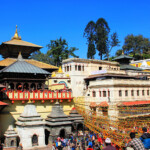
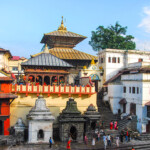

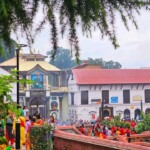
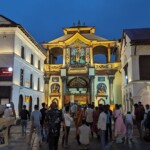



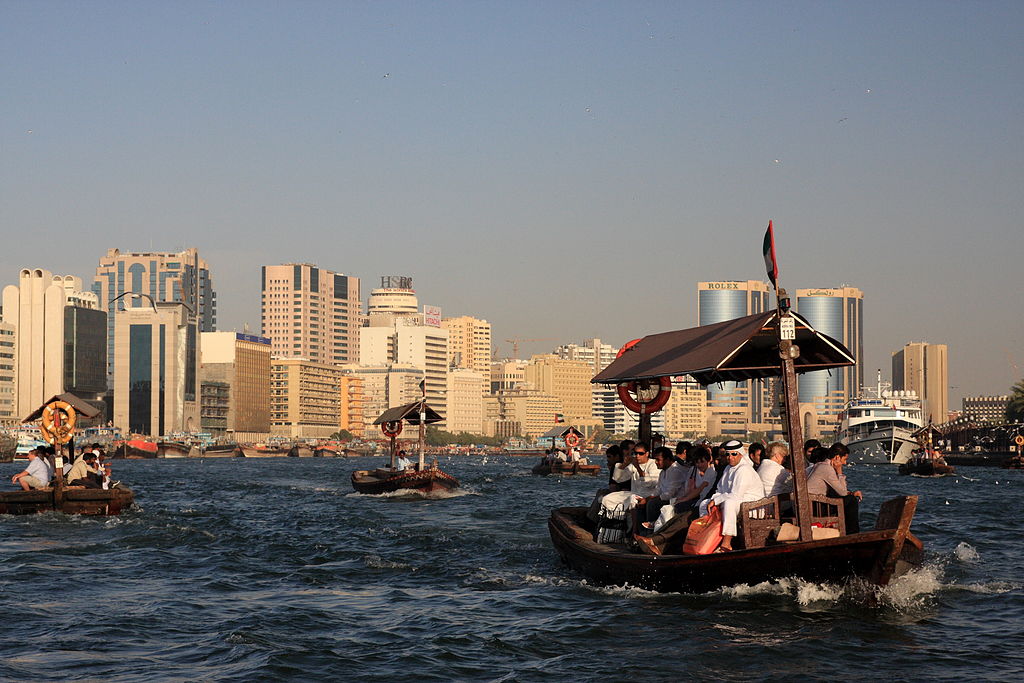
I have read some excellent stuff here Definitely value bookmarking for revisiting I wonder how much effort you put to make the sort of excellent informative website